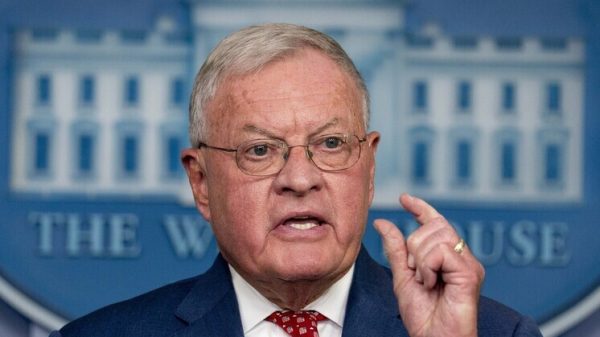The earliest references to the “one-stop shop” emerged during the first decades of 20th century as the fast-growing US economy spurred rapid retail innovation. A single location for various products provides obvious benefits: removing the hassle of travelling around town to visit different stores.
Jeff Bezos redefined that logic for the internet age, making Amazon a dominant (and perhaps ambivalent) force first in selling books, and then in pretty much everything else. Before 2020 Amazon was a phenomenon, but the coronavirus pandemic has made it all but ubiquitous.
The numbers in its financial results for the last three months of 2020, to be published on Tuesday, will be even bigger than Amazon’s earlier instalments in the first pandemic year. Christmas and Thanksgiving always make the final quarter of the year the strongest for Amazon. Christmas 2020 will mainly be remembered for locked-down celebrations, but analysts predict that it will also mark the first time Amazon’s revenue surpasses $100bn in one quarter.
In fact, consensus estimates collated by S&P Global Market Intelligence are forecasting sales of about $120bn – 37% up on the same period in 2019. Profits before tax are pegged at $4.4bn – shy of the record $6.8bn it made in the three months to September, but higher than any single quarter before the pandemic.
It was only in 2016 that single-quarter profits topped $1bn, but that’s because the Bezos strategy is to invest spare cash in relentless, ruthless expansion and innovation, so that rivals cannot creep up on it.
Diversified profits ease the pressure, and make it easier to tackle sectors not yet cracked, such as fresh foods
There are some potential threats to Amazon’s dominance, but they seem remote. Alibaba, the Chinese e-commerce group – which also updates investors on Tuesday – has grown at a relentless pace, but its founder Jack Ma is now in a high-stakes political battle with premier Xi Jinping.
There is always a chance (albeit seemingly remote now) that Amazon, the disrupter par excellence of high street retail, could be upended by challengers such as Shopify, the retail internet tech provider. Some business models – Chinese social commerce pioneer Pinduoduo, for example – seem baffling until you see the enthusiasm and the revenues they generate. And the pandemic has forced bricks-and-mortar retailers to look online as well, which could dent Amazon’s market share.
Amazon’s growth has various avenues. Its server subsidiary, Amazon Web Services, was created almost by accident, but is a margin machine that shows little sign of slowing, given the pandemic-accelerated shift to cloud services. There are signs of success in its battle for the sofa with its Prime video streaming service drawing customers. And its store of info on what people actually buy – possibly the most valuable data for advertisers – has quietly made it the third-biggest force in online advertising.
Diversified profit sources ease the pressure for success from each arm from quarter to quarter, and make it much easier for Amazon to incubate businesses in sectors it has not yet cracked, such as fresh food retail.
That diversity also means that regulators are less likely to land a blow – although the company’s treatment of warehouse workers during the pandemic and its undercutting of sellers with its own-label products have drawn political fire.
At the start of 2021 Bezos lost his crown as the world’s richest man to his space-race rival, Tesla boss Elon Musk. The symbolism is probably misplaced: 2020 showed that Amazon’s efforts to be the online everything shop will take some beating.




















































Свежие комментарии